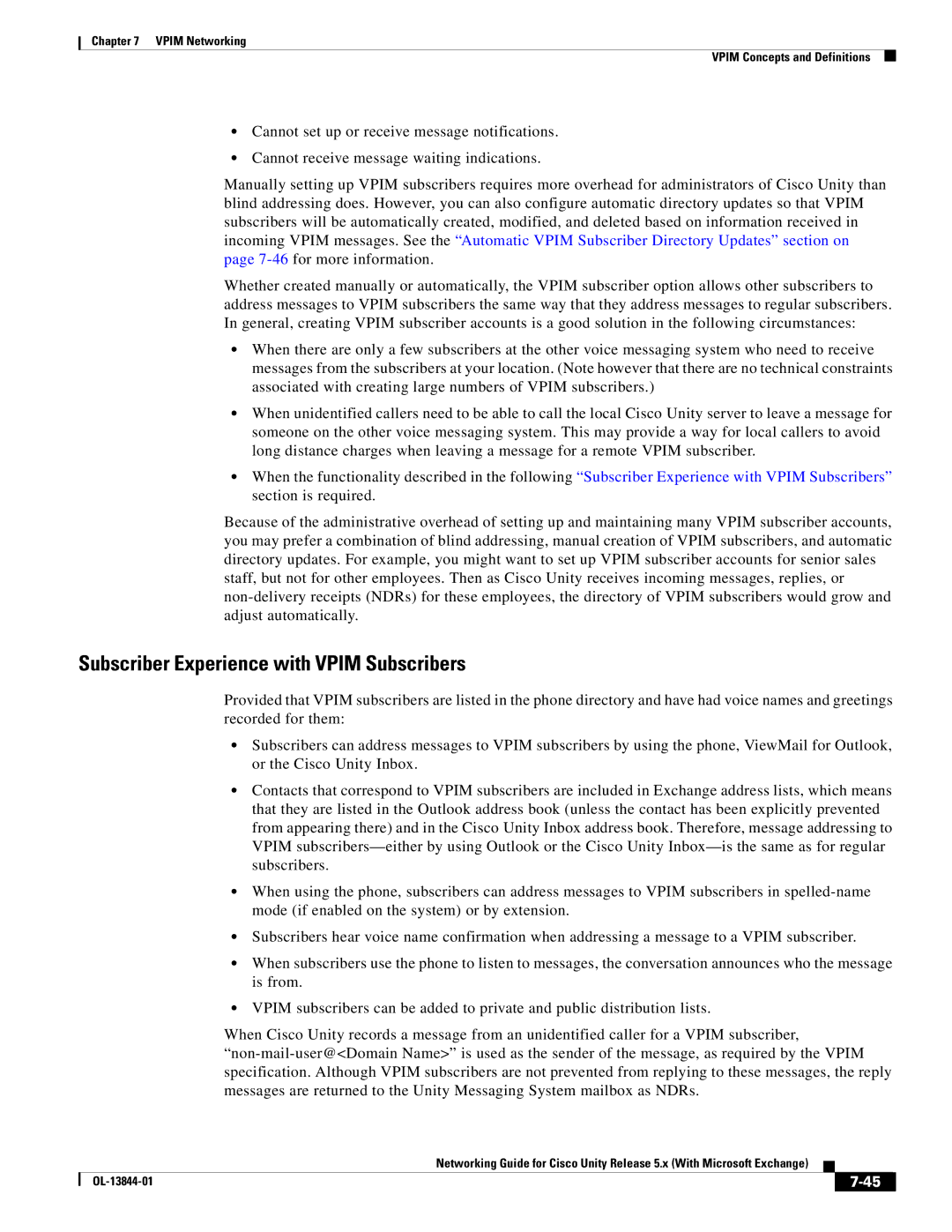Chapter 7 VPIM Networking
VPIM Concepts and Definitions
•Cannot set up or receive message notifications.
•Cannot receive message waiting indications.
Manually setting up VPIM subscribers requires more overhead for administrators of Cisco Unity than blind addressing does. However, you can also configure automatic directory updates so that VPIM subscribers will be automatically created, modified, and deleted based on information received in incoming VPIM messages. See the “Automatic VPIM Subscriber Directory Updates” section on page
Whether created manually or automatically, the VPIM subscriber option allows other subscribers to address messages to VPIM subscribers the same way that they address messages to regular subscribers. In general, creating VPIM subscriber accounts is a good solution in the following circumstances:
•When there are only a few subscribers at the other voice messaging system who need to receive messages from the subscribers at your location. (Note however that there are no technical constraints associated with creating large numbers of VPIM subscribers.)
•When unidentified callers need to be able to call the local Cisco Unity server to leave a message for someone on the other voice messaging system. This may provide a way for local callers to avoid long distance charges when leaving a message for a remote VPIM subscriber.
•When the functionality described in the following “Subscriber Experience with VPIM Subscribers” section is required.
Because of the administrative overhead of setting up and maintaining many VPIM subscriber accounts, you may prefer a combination of blind addressing, manual creation of VPIM subscribers, and automatic directory updates. For example, you might want to set up VPIM subscriber accounts for senior sales staff, but not for other employees. Then as Cisco Unity receives incoming messages, replies, or
Subscriber Experience with VPIM Subscribers
Provided that VPIM subscribers are listed in the phone directory and have had voice names and greetings recorded for them:
•Subscribers can address messages to VPIM subscribers by using the phone, ViewMail for Outlook, or the Cisco Unity Inbox.
•Contacts that correspond to VPIM subscribers are included in Exchange address lists, which means that they are listed in the Outlook address book (unless the contact has been explicitly prevented from appearing there) and in the Cisco Unity Inbox address book. Therefore, message addressing to VPIM
•When using the phone, subscribers can address messages to VPIM subscribers in
•Subscribers hear voice name confirmation when addressing a message to a VPIM subscriber.
•When subscribers use the phone to listen to messages, the conversation announces who the message is from.
•VPIM subscribers can be added to private and public distribution lists.
When Cisco Unity records a message from an unidentified caller for a VPIM subscriber,
|
| Networking Guide for Cisco Unity Release 5.x (With Microsoft Exchange) |
|
| |
|
|
| |||
|
|
|
|
| |
|
|
|
| ||
